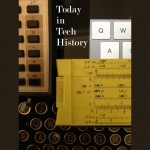 1945 – Arthur C. Clarke began privately circulating copies of his paper “The Space-Station: Its Radio Applications” which suggested geostationary space stations could be used for worldwide television broadcasts.
1945 – Arthur C. Clarke began privately circulating copies of his paper “The Space-Station: Its Radio Applications” which suggested geostationary space stations could be used for worldwide television broadcasts.
1949 – Josef Carl Engressia, Jr. was born in Richmond, Virginia. He would later go by the name Joybubbles and develop a talent to whistle at 2600 Hz, allowing him to control phone switching equipment.
1961 – US President John F. Kennedy delivered a speech to Congress declaring the United States would go to the Moon.
1989 – The first Magellan GPS NAV 1000s were shipped to retailers. They ran for a few hours on six AA batteries, and sold for $3,000.
1994 – CERN hosted the first international World Wide Web conference, which continued through May 27.
Read Tom’s science fiction and other fiction books at Merritt’s Books site.